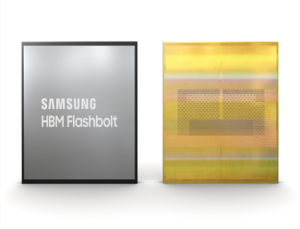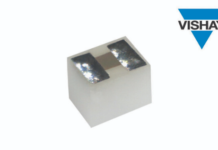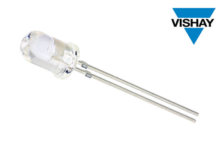
Samsung Electronics today launched its third-generation High Bandwidth Memory 2E (HBM2E), ‘Flashbolt’, in the market. The new 16-gigabyte (GB) HBM2E is uniquely suited to maximize high performance computing (HPC) systems and help system manufacturers to advance their supercomputers, AI-driven data analytics and state-of-the-art graphics systems in a timely manner.
Ready to deliver twice the capacity of the previous-generation 8GB HBM2 ‘Aquabolt’, the new Flashbolt also sharply increases performance and power efficiency to significantly improve next-generation computing systems.
The 16GB capacity is achieved by vertically stacking eight layers of 10nm-class (1y) 16-gigabit (Gb) DRAM dies on top of a buffer chip. This HBM2E package is then interconnected in a precise arrangement of more than 40,000 ‘through silicon via’ (TSV) microbumps, with each 16Gb die containing over 5,600 of these microscopic holes.
Samsung’s Flashbolt provides a highly reliable data transfer speed of 3.2 gigabits per second (Gbps) by leveraging a proprietary optimized circuit design for signal transmission, while offering a memory bandwidth of 410GB/s per stack.
Samsung’s HBM2E can also attain a transfer speed of 4.2Gbps, the maximum tested data rate to date, enabling up to a 538GB/s bandwidth per stack in certain future applications. This would represent a 1.75x enhancement over Aquabolt’s 307GB/s.
“With the introduction of the highest performing DRAM available today, we are taking a critical step to enhance our role as the leading innovator in the fast-growing premium memory market,” said Cheol Choi, executive vice president of Memory Sales & Marketing at Samsung Electronics. “Samsung will continue to deliver on its commitment to bring truly differentiated solutions as we reinforce our edge in the global memory marketplace.”
Samsung expects to begin volume production during the first half of this year. The company will continue providing its second-generation Aquabolt lineup while expanding its third-generation Flashbolt offering, and will further strengthen collaborations with ecosystem partners in next-generation systems as it accelerates the transition to HBM solutions throughout the premium memory market.















